What Makes Golf Shoes Different

Author: Andy Hong | Founder at XDS
Hi, I'm Andy Hong, here to share my expertise in footwear manufacturing with you.
What Makes Golf Shoes Different
Table of Contents
What makes golf shoes different from regular sports shoes? At first glance, they may appear similar, but golf shoes are designed with unique features tailored to the specific demands of the sport.
To be honest, I didn’t know much about the specific distinctions between golf shoes and other athletic footwear initially. However, after receiving multiple questions from clients and spending hours diving into research, I’ve come to appreciate the specialized nature of these shoes.
From understanding their construction to discovering how they improve a golfer’s performance, I’ve uncovered valuable insights that I’m excited to share with you.
In this guide, we’ll explore the performance benefits, materials, and unique features of golf shoes while comparing them to regular sports shoes. By the end, you’ll see why they’re a critical part of any golfer’s gear.
So, let’s begin!
1. Performance Benefits of Golf Shoes
Golf shoes are specifically designed to improve performance on the course, offering advantages that regular footwear cannot provide. Whether on lush fairways or challenging roughs, golf shoes provide optimal performance by addressing the sport’s unique requirements:
Enhanced Traction
A key performance feature of golf shoes is their superior grip. Spiked designs, often made of plastic or soft rubber, dig into the ground to provide excellent traction, reducing the risk of slipping during swings. Even spikeless designs, with their innovative tread patterns, offer remarkable grip on a variety of surfaces, from grass to hard pavements.
This traction enhances confidence, particularly in damp or uneven conditions, where maintaining a firm stance is critical.
Improved Balance and Posture
Golf shoes are designed with stability in mind, often featuring wider soles and advanced materials to distribute body weight evenly. This stability enhances performance during swings, where accurate foot positioning directly influences power and precision. XDS’ shoes incorporate these design elements to ensure golfers achieve optimal performance and comfort on the course.
Comfort for Extended Play
Golf rounds can stretch for hours, requiring shoes that prioritize comfort. Golf shoes are equipped with cushioned insoles, shock-absorbing midsoles, and breathable uppers to keep feet comfortable and cool. Arch support and ergonomic designs reduce fatigue, enabling players to walk the course without discomfort. This focus on comfort guarantees golfers can maintain their focus and energy throughout the game.
Support for Power Generation
Beyond stability, golf shoes offer reinforced midsoles and lateral support that help transfer energy efficiently during swings. For instance, this support enhances power generation, translating to stronger and more controlled shots. By anchoring the feet firmly, these shoes contribute to a golfer’s ability to generate torque and maintain consistent performance.
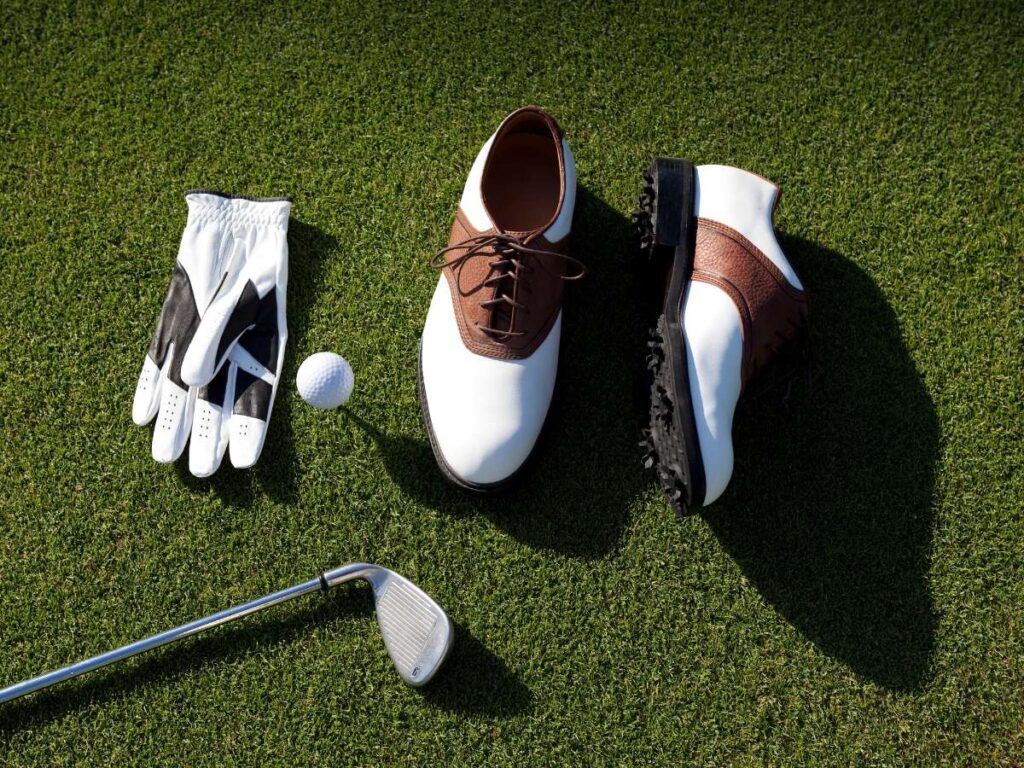
2. Materials Used in Golf Shoes
The materials used in golf shoes are carefully selected to provide a balance of performance, durability, and comfort. Here’s a closer look at the materials that define golf shoe quality and functionality:
- Leather: Premium golf shoes often feature leather uppers, known for their durability, comfort, and water resistance. Full-grain leather is especially popular for its breathability and ability to mold to the shape of the foot over time, providing a custom fit.
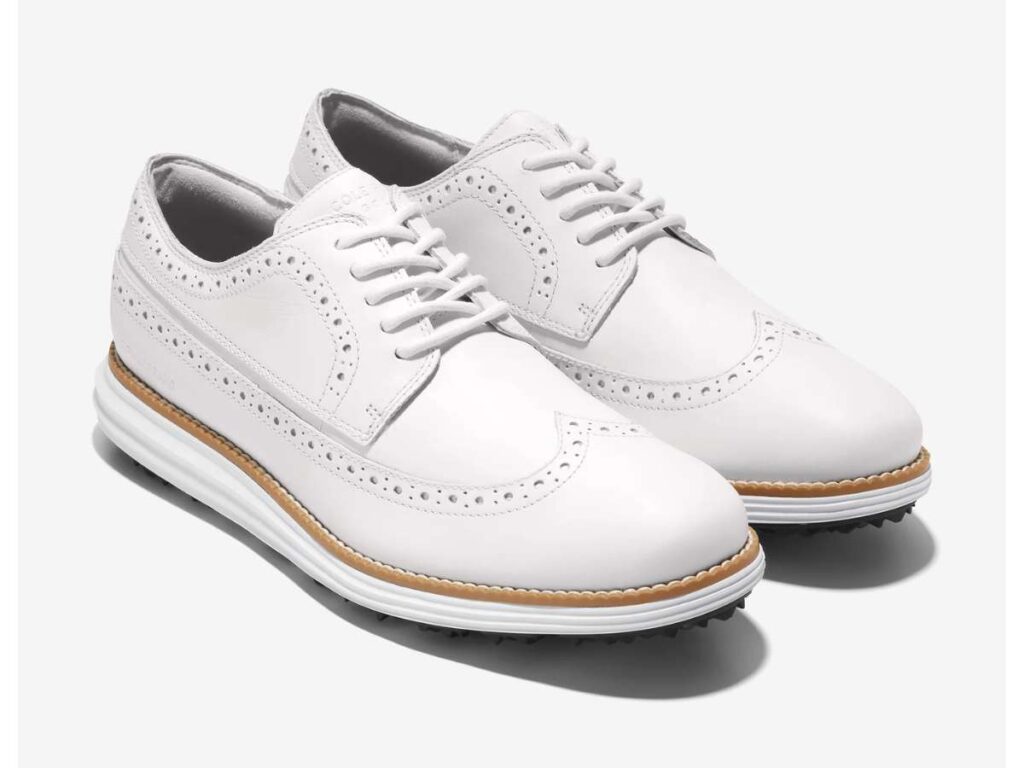
- Synthetic Materials: Lightweight and affordable, synthetic uppers mimic leather’s look while being easier to maintain. They are ideal for golfers seeking flexibility and water resistance without the higher cost of leather.
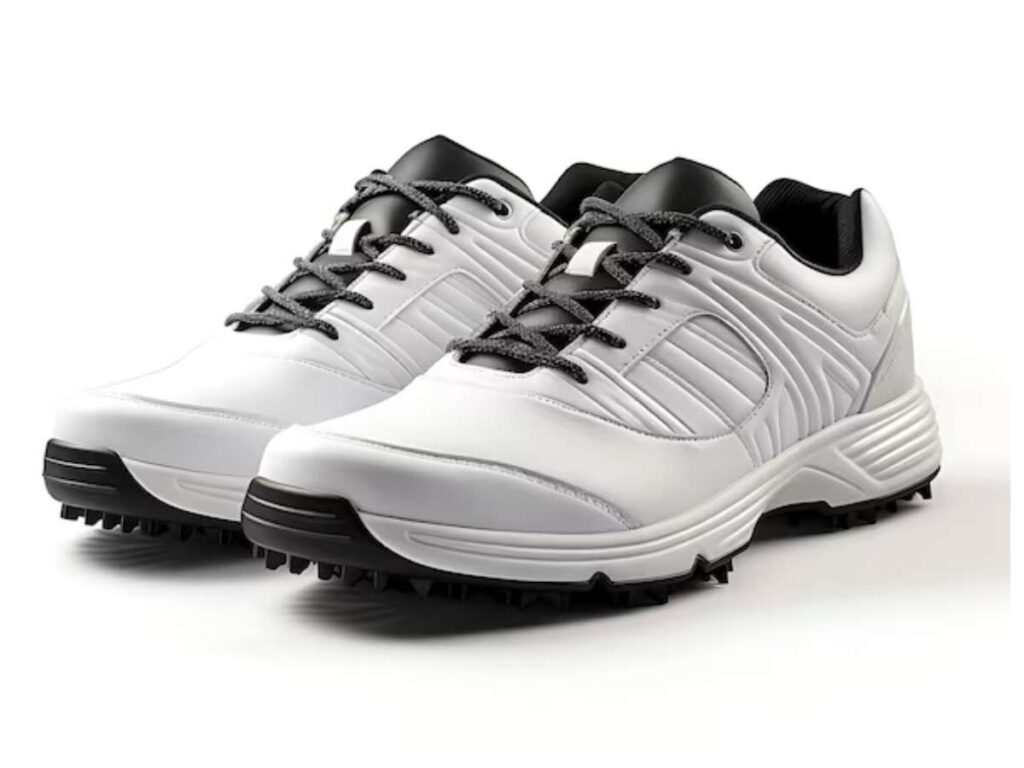
- Waterproof Membranes: Advanced waterproofing technologies like GORE-TEX or proprietary membranes are commonly integrated into golf shoes. These materials keep feet dry in wet conditions while maintaining breathability, enhancing comfort during long games.
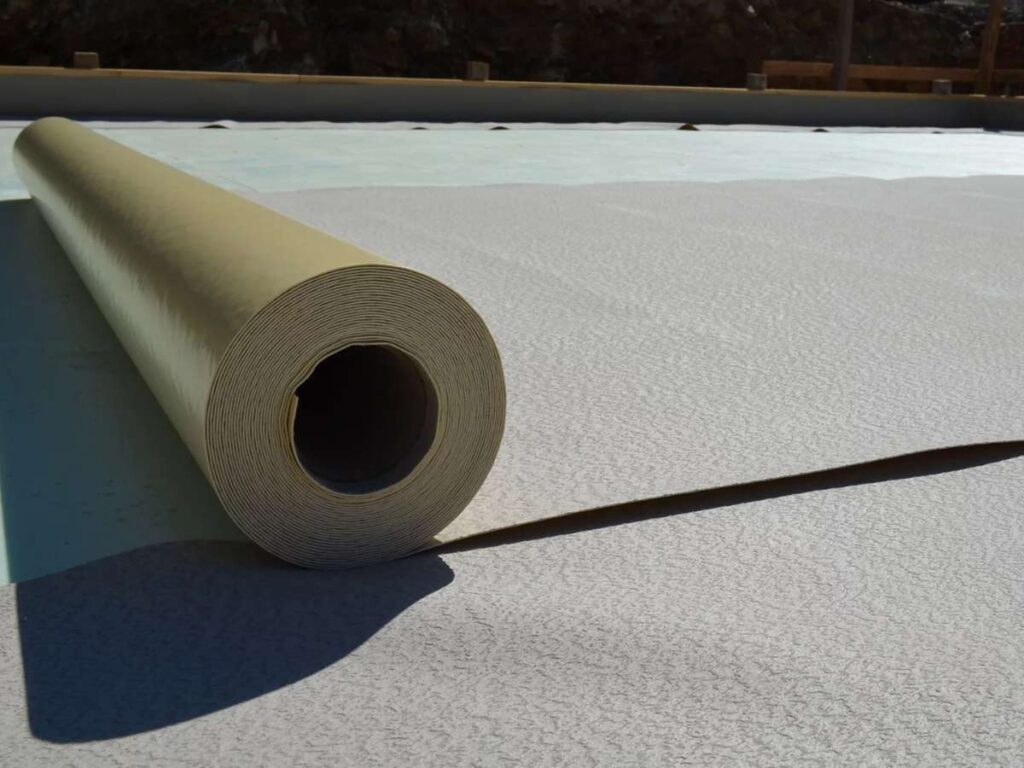
- Rubber Outsoles: Rubber is widely used in the outsole for its excellent traction and durability. The material’s flexibility also enhances comfort, allowing for natural foot movement during swings and walking.
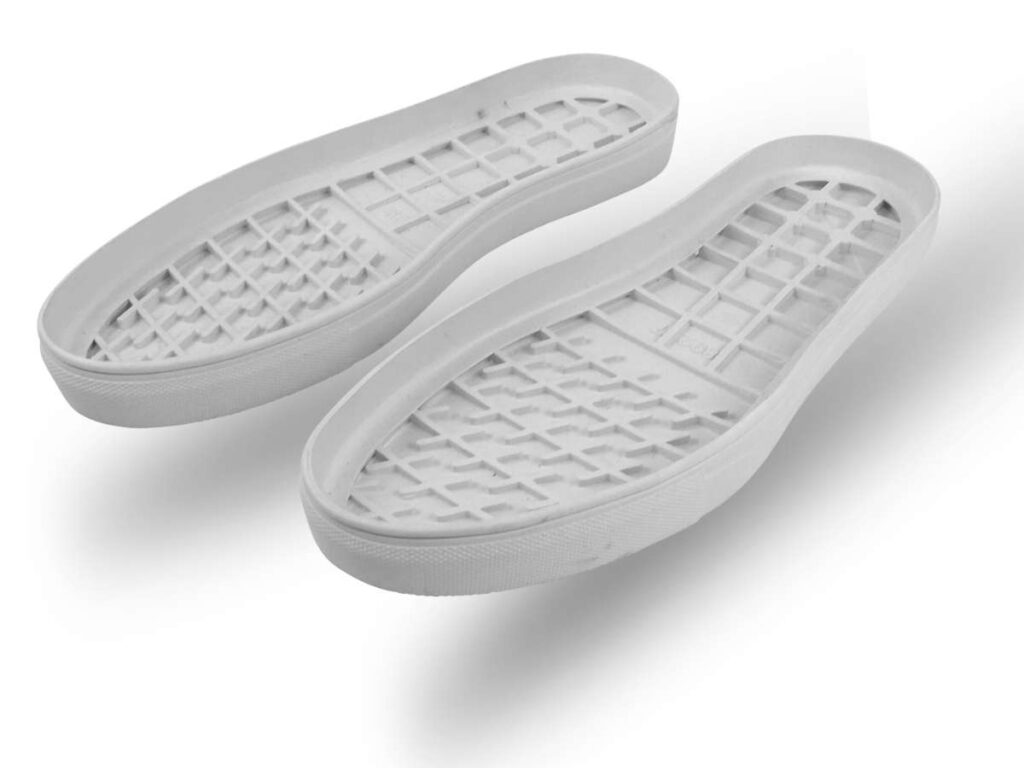
- EVA (Ethylene Vinyl Acetate): Found in midsoles, EVA provides lightweight cushioning and shock absorption. This material reduces foot fatigue, making it a popular choice for long rounds of golf.
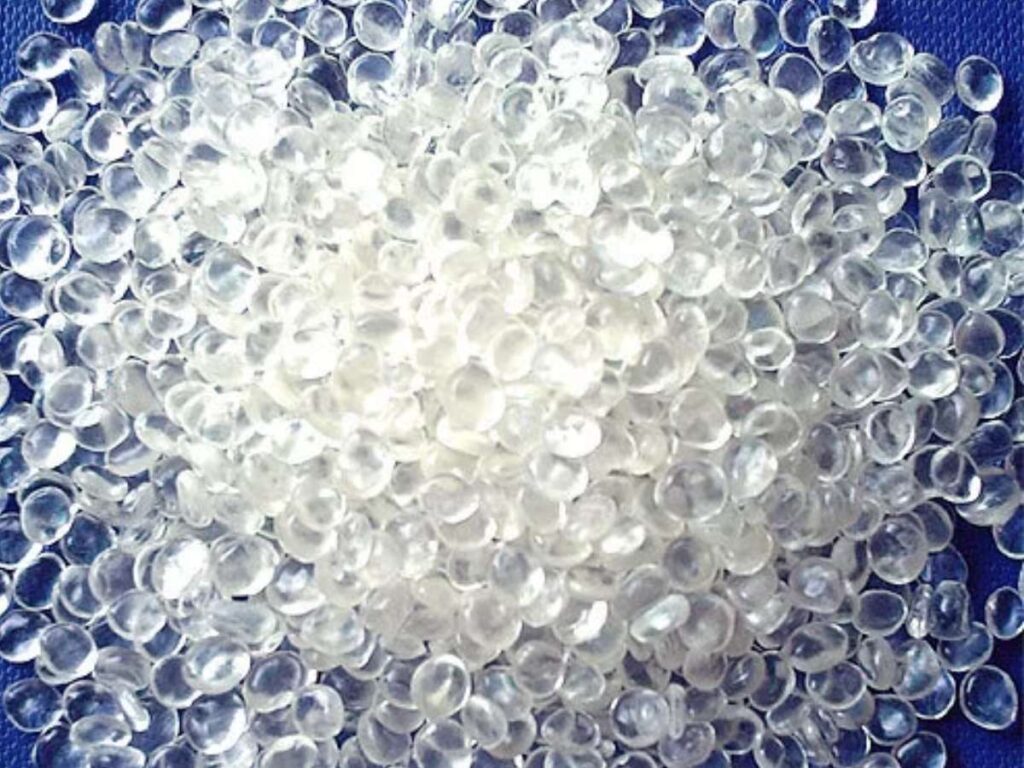
- TPU (Thermoplastic Polyurethane): Used in outsoles or overlays, TPU offers added durability, stability, and slip resistance. It is commonly included in performance-focused designs for players needing extra support.
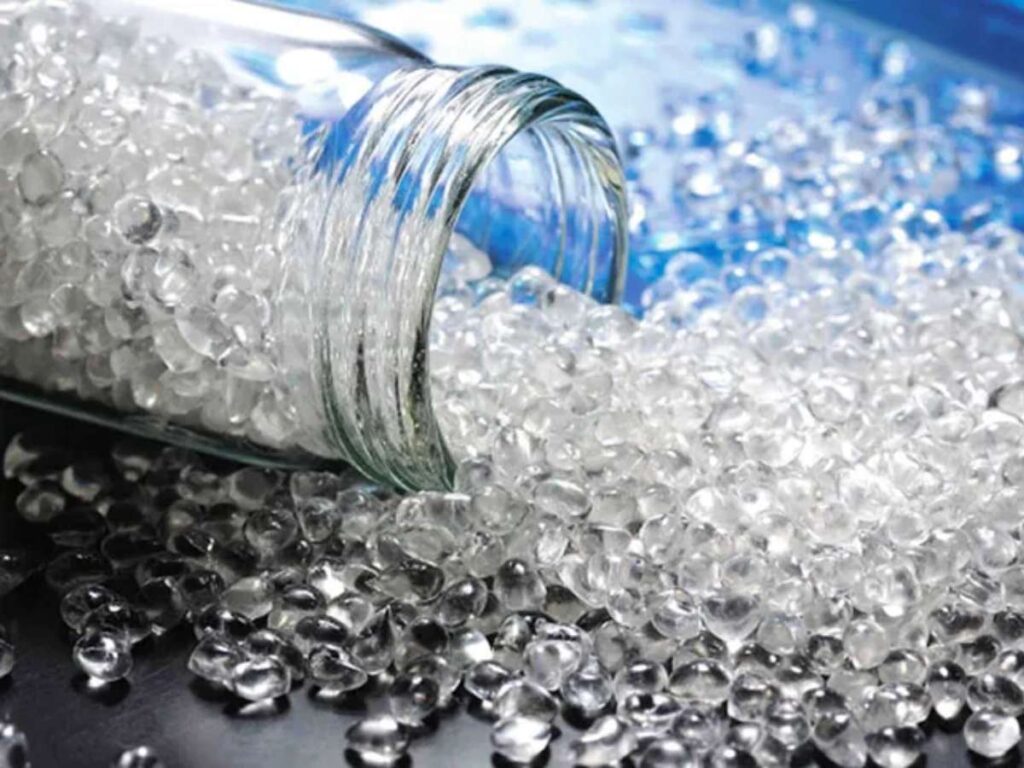
- Mesh Panels: Many golf shoes incorporate mesh panels or linings to improve breathability. These materials wick away moisture, keeping feet cool and reducing the risk of blisters or discomfort during hot weather.
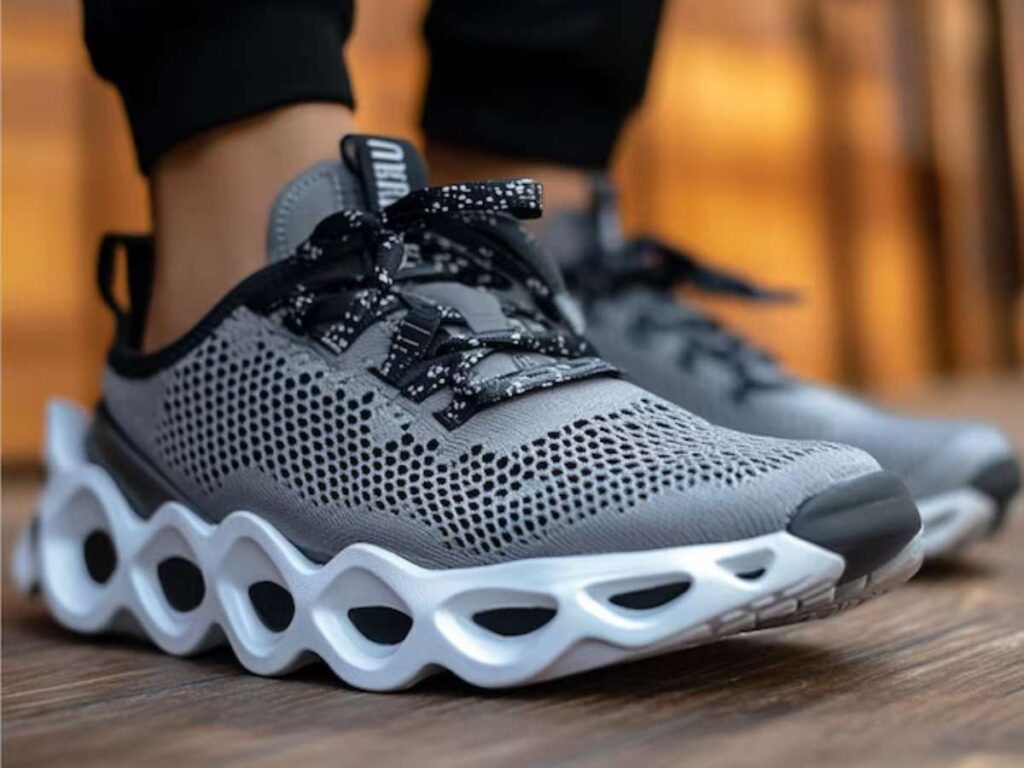
- Carbon Fiber: Found in high-performance models, carbon fiber is used in midsoles or shanks to enhance stability and energy transfer. This material supports powerful swings and prevents unnecessary foot movement.
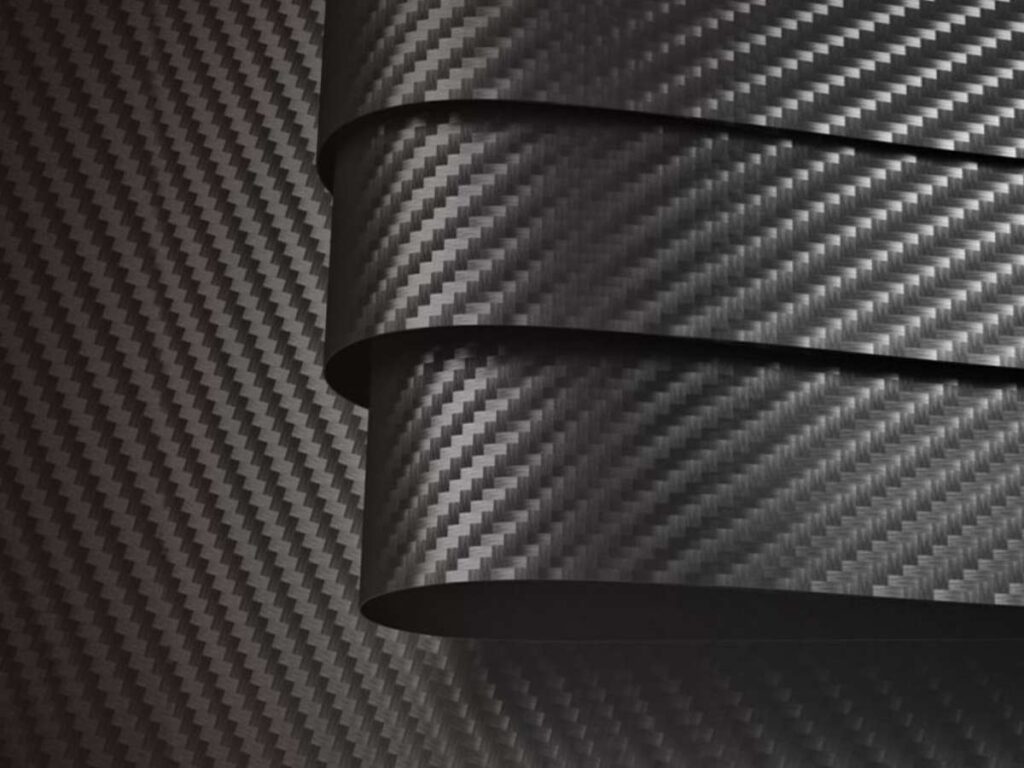
3. Unique Features of Golf Shoes
Golf shoes are crafted with distinct design elements that set them apart from other footwear types. These features focus on providing functionality specifically tailored to the sport of golf. Here are 3 key features that define golf shoes:
Spiked and Spikeless Outsoles
Golf shoes are available with spiked or spikeless soles, each designed for specific playing conditions. Spiked outsoles feature plastic or rubber cleats that offer a strong grip on grass and wet terrains, preventing slips. Spikeless models have innovative tread patterns that provide stability and traction while remaining versatile for off-course use. Both designs focus on optimizing performance through superior grip and balance.
Waterproof and Breathable Materials
Most golf shoes are made with premium materials like leather, synthetic blends, or waterproof membranes. These materials provide durability and protect feet from moisture, providing comfort in wet conditions. Many models also incorporate breathable mesh or ventilation panels to keep feet cool during extended play. The combination of waterproofing and breathability enhances year-round usability without compromising comfort.
Custom Fit Systems and Wide Soles
Golf shoes often include advanced fit systems such as BOA laces or adjustable straps, allowing for a snug and secure fit. The wide soles are specifically designed to improve balance by distributing weight evenly during swings. Reinforced heel counters and structured midsoles add extra stability, preventing foot movement that could impact performance. These structural features are engineered for precision and control on the course.
4. Golf Shoes vs. Regular Sports Shoes
Both golf shoes and regular sports shoes are essential footwear designed to support athletic performance. Each type has unique features suited to specific activities, focusing on comfort, stability, and durability. Below is a detailed comparison of their characteristics:
| Feature | Golf Shoes | Regular Sports Shoes |
| Outsole Design | Specialized traction patterns with spiked or spikeless options for grip on grass and turf. | General flat or slightly textured outsoles for diverse surfaces. |
| Material Composition | Often includes waterproof leather, synthetic blends, or breathable mesh for outdoor conditions. | Typically made with lightweight and breathable materials for indoor or outdoor use. |
| Stability and Support | Wide soles, reinforced heels, and arch support tailored for rotational movements in golf swings. | Moderate support suitable for lateral and forward movements in general sports. |
| Durability | Built to withstand outdoor environments and frequent exposure to wet and uneven surfaces. | Designed for durability on varied surfaces but not specialized for outdoor grass conditions. |
| Purpose-Specific Design | Features tailored for maintaining balance during golf swings and walking long distances. | Versatile design for running, gym workouts, or team sports, focusing on all-around performance. |
Understanding the unique features of each type of footwear helps in selecting the right pair for specific activities, enhancing comfort and performance.
5. Factors Affecting Golf Shoe Performance
Several factors contribute to the overall performance of golf shoes, determining their effectiveness on the course. From the materials used to the fit and design, each element plays a crucial role in supporting a golfer’s needs. Here are 4 key factors that influence how well golf shoes perform:
Traction Technology
The outsole design, whether spiked or spikeless, directly impacts grip on the golf course. Spiked shoes provide superior grip on soft, wet grass, while spikeless models excel in versatility and comfort across multiple surfaces. The material and pattern of the outsole treads also affect how well the shoe performs during rotational movements. Traction is essential for maintaining stability and power during swings.
Material Quality and Construction
High-quality materials, including full-grain leather and advanced synthetics, significantly improve durability and comfort. Breathable mesh or ventilation panels enhance temperature regulation, making the shoes suitable for use in warmer environments. XDS’ shoes utilize these premium materials to deliver exceptional longevity and versatility for climbers.
Fit and Comfort
A proper fit is essential for optimal performance, as poorly fitting shoes can cause discomfort and affect balance. Features like adjustable lacing systems, padded insoles, and arch support contribute to a snug and secure fit. Shoes that accommodate a golfer’s foot shape reduce fatigue during long rounds. Comfort ensures focus remains on the game, not on foot pain or irritation.
Weight and Flexibility
Lightweight golf shoes enhance mobility, making it easier to walk the course and complete fluid movements during swings. Flexibility in the sole allows natural foot motion, contributing to comfort and stability. Overly rigid shoes may hinder performance, especially during dynamic actions like swings or pivoting. A balance between lightness and structural support is key for effective performance.
Conclusion
Golf shoes are an essential part of any golfer’s gear, offering unique features that enhance performance, comfort, and stability on the course. By understanding what sets golf shoes apart from regular sports shoes, it becomes easier to make informed decisions about selecting the right pair for specific needs. From traction to durability, every aspect of their design is tailored to meet the demands of the sport.
We hope this guide has provided valuable insights into the functionality of golf shoes. At XDS, we address common challenges like MOQ requirements by offering flexible options. Our team can replicate the quality, innovation, and materials of top brands, ensuring you receive premium product solutions at competitive rates. Contact us today and let us help you create exceptional products tailored to your vision and requirements.
Explore More Helpful Resources
There’s more to explore! Check out our additional product selections to find exactly what you’re looking for:
Still haven’t found what you’re looking for? Don’t hesitate to contact us; we’re available around the clock to assist you.
Quick Quote
Fill out the form, get the quote in hours!





